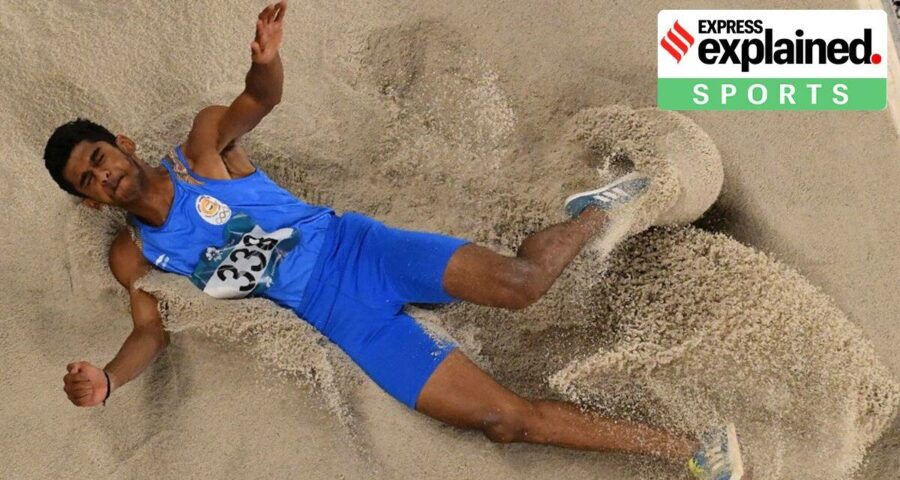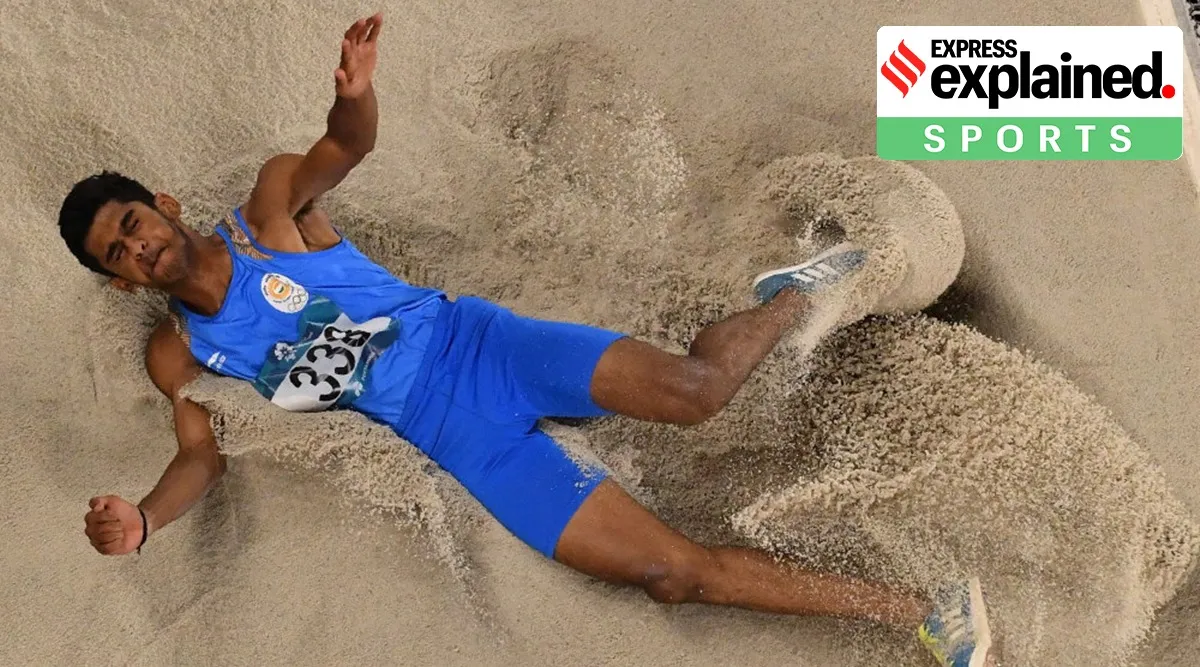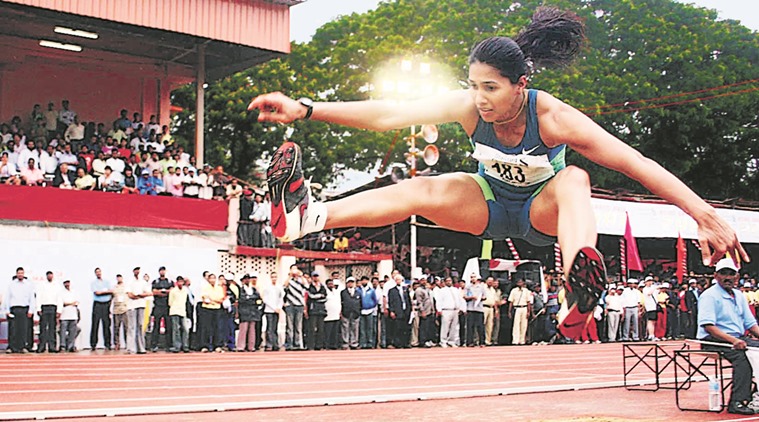In India the story is no different, Anju Bobby George's 6.83 metres jump at Athens Olympics in 2004 remains at the top of the list. In the men's section, M Sreeshankar has broken the national record twice in three years, the latest being at Patiala this week.
American Mike Powell’s long jump world record of 8.95 metres has now stood for 30 years. Before Powell’s monster effort in 1991, US legend Bob Beamon’s historic leap of 8.90m had remained unchallenged for 23 years. Going further back, Jesse Owens had been the undisputed king of the pit as no one could match his jump of 8.13 from 1935 to 1960. In the women’s event, Galina Chistyakova, representing the erstwhile USSR, set the world record of 7.52 metres in 1988. The mark is still in her name.
In India the story is no different, Anju Bobby George’s 6.83 metres jump at Athens Olympics in 2004 remains at the top of the list. In the men’s section, M Sreeshankar has broken the national record twice in three years, the latest being at Patiala this week. With a record jump of 8.26 metres he made the cut for the Tokyo Games. Flipping back the pages of history shows that in India too long jump records have been tough to break. In 2004, Amrit Pal Singh (8.08) bettered TC Yohannan’s 30-year-old mark (8.07). Singh’s record too stood for nearly a decade.
Here’s explaining the long-standing long jump records:
How close has anyone got to Powell’s record?
Actually, no one has even come within touching distance. Two of the top three jumps ever were set at the Tokyo World Championships in 1991, Powell’s and silver-medalist Carl Lewis (8.87 metres), the American sprints and long jump legend. Since then the best efforts have been 8.74 metres by Americans — Erick Walder in 1994 and Dwight Philips in 2009. Among the new crop of jumpers, the highly rated Cuban, 22-year-old Juan Miguel Echevarria, has a personal best of 8.68 metres.
Is the men/women long jump record the oldest in the books?
There are three records older than the men’s long jump; shot put, discus throw and the hammer throw.
However, there is a question mark over the shot put record set in 1990 because American Randy Barnes was subsequently banned for life for doping. The discus throw mark of 1986 is also dodgy because it was created by Jurgen Schult for East Germany, a country that existed from 1949 to 1990 which had a dubious doping past.
The 100 and 200 metre world record was set in 1988 by Florence Griffith Joyner, who passed away following a seizure in 1998 when in her late thirties. Records set pre-1988, before Chistyakova’s feat, are the women’s 4×800 metre relay (rarely run anymore), shot put (1987), high jump (1987), the 800 metres (1983) and the 400 metres (1985).
Why did Beamon’s Olympic and then world record stand for so long?
American star Bob Beamon broke the previous record by 55 centimetres, a stunning performance, at the 1968 Olympics. He would never get close to 8.90 metres again, his second best jump being 8.33 metres.
Mexico City, the host venue of the 1968 Games, is at an altitude of 2,240 metres. The lower oxygen levels at high altitude make it ideal for long distance runners to train to build endurance, yet less wind resistance helps sprinters and jumpers. This is what world athletics published on its website on the 50th anniversary of Beamon’s jump. “It was, at least in part, powered by a perfect storm – the thin air of Mexico City’s helpful 2,240m altitude and a maximum 2.0 metre per second allowable wind – by a man who that season was clearly the finest long jumper on the planet.” It has also been reported that shortly after Beamon’s jump it rained, hence making it a little tougher for his competitors.
Did Powell benefit from any kind of advantage?
There has been debate over whether the track rolled out at the Olympic Stadium in Tokyo for the 1991 World Championship helped runners and jumpers.
The level of competition was high-class and Powell had a world class rival in Carl Lewis who pushed him to the limit. They finished 1-2 with 8.95 and 8.87. Lewis also jumped 8.91 metres but the wind speed was 2.9 metres per second, well above the legal cap.
The hardness and speed of the surface also came into focus when Lewis set the then world record of 9.86 seconds in a remarkable race in which the top-six clocked sub-10 second timings for the first time ever in a 100 metres final. Apart from Lewis’s world record, there were two personal bests, two area records and one national record.
“There is no question of the 100m record being de-ratified. But this new surface is giving cause for concern,” IAAF spokesman Mark Butler was quoted as saying by The Herald in 1991.
Powell was candid when he told LetsRun.com. “The surface was really, really hard. It was hard and bouncy and I know that afterwards, they don’t make tracks like that anymore. It definitely did help… that one was definitely springier than other tracks that I’ve been on,” Powell said.
📣 JOIN NOW 📣: The Express Explained Telegram Channel
How good was Powell after the world-record jump?
Powell’s second best effort is 8.70m at Salamanca in Spain in 1993. Powell defended his world title two years later in Stuttgart, Germany, by leaping 8.59 metres. A year later at the Barcelona Olympics, Lewis took gold with 8.67, followed by Powell with 8.64. Lewis has recorded five jumps over 8.70 metres including his 8.87 metres at the world championships final.
Have standards fallen recently at the Olympics and World Championships?
In the men’s long jump there has been a dip in quality. At the last Olympics, Rio 2016, 8.38 metres was good enough for United States’s Jeff Henderson to win the gold medal. Cuba’s Echevarria won gold at the 2019 World Championships with 8.46 metres.
At the London Olympics in 2012, Greg Rutherford had won the event with a jump of 8.31 metres, just 18 centimetres more than Owens’s best in the 1930s.
For women, the top three spots were taken at 7.17, 7.15 and 7.08 at the Rio Olympics and the last World Championships the podium finishers were at 7.30m, 6.92 and 6.91. Jackie Joyner Kersee’s 7.49 in 1994 is the second best jump ever.
Reasons for the records still standing?
Sprinters are usually good jumpers, as proven by Carl Lewis. These days it is very rare to see a top sprinter try the long jump. Powell, while watching the 2009 World Championships in Berlin felt, sprint legend Usain Bolt had it in him to jump 9 metres. “He can jump 9 metres, because of his speed and height. Long jump is determined by four things, speed, height of the hips, take off, take off angle. He has two of them already,” Powell had said.
In another interview before the Ostrava Golden Spike in 2014, Powell said he thought his world record would not last more than a few minutes because Lewis had two more jumps in Tokyo. Powell credited the high level of competition during his era to a group of jumpers, including him and Lewis, who were pushing each other to the limit.
Nowadays with long jump falling off the list of ‘glamour events’ without an icon, the theory is that younger athletes are not drawn to it like before.
The women’s section has had its share of top athletes failing dope tests. Tatyana Kotova, who has the fifth best jump, was banned for doping following which saw India’s Anju Bobby George get an upgrade, from silver at the World Athletics Final of 2005, to gold.
The top three at the Athens Olympics, all Russians tested positive later on in their careers, while Marion Jones, the fourth-placed jumper was stripped of her spot after an alleged doping offence. Anju, who finished sixth moved up to fifth.
How often have Indian national records been broken?
The women’s record is 17 years old, set by Anju (6.83 metres) at the Athens Olympics in 2004
The men’s record has been improved upon after a dormant period. In 2004, Amrit Pal Singh (8.08) bettered TC Yohannan’s 30-year-old mark (8.07). Singh’s record stood for nearly a decade, till K Premkumar improved it by a centimeter. Then in 2016, Ankit Sharma, in an amazing series of jumps, registered 8.17, 8.19 and 8.14 to break the record in Almaty, Kazakhstan. M Sreeshankar’s career graph has been on the rise since 2018. That year he improved on Sharma’s mark by jumping 8.20 metres. Earlier this week, at the Federation Cup he broke his own mark with 8.26 metres and qualified for the Tokyo Olympics.
Source: Read Full Article




